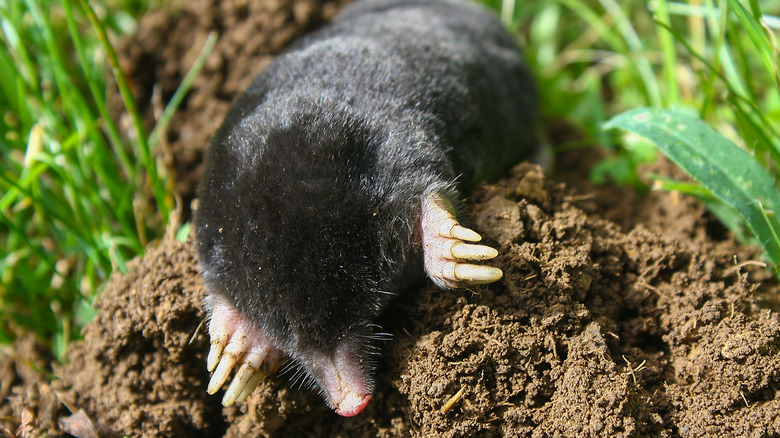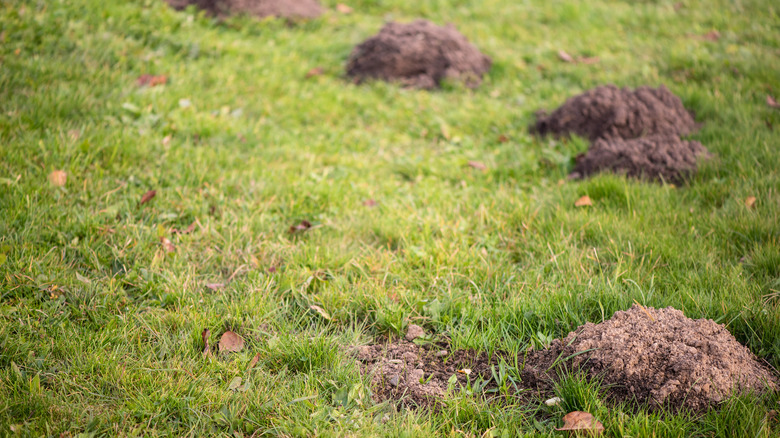Does Sprinkling Boric Acid Really Work To Evict Moles From Your Yard?
According to some online blogs, moles, primarily subterranean creatures, find the scent of boric acid unappealing. The idea is that pouring boric acid into mole tunnels leads to absorption by the surrounding soil, creating an unfavorable environment for the moles. However, there isn't substantial scientific evidence to support the claim. Without solid scientific validation, it's unclear how effective this method truly is in repelling these creatures. For this reason, it's best to approach such claims with a degree of skepticism. It's also important to consider boric acid's broader side effects. While effective for some, it might not be suitable for every lawn. Its application has implications for soil health and well-being. Excessive use can be detrimental, potentially leading to plant stress, damage, and even death. This is especially important for sensitive or young plants, which might be more susceptible to the effects of boric acid.
As there is limited scientific backing for the effectiveness of boric acid, it's best to seek out other, more reliable, and proven methods that successfully drive moles away. Indeed, getting rid of moles can be quite a challenge and is more than just a quick fix; you'll need to understand their habits and way of life. It's about getting to the heart of what's attracting them to your garden in the first place. Could it be the abundance of food sources? By addressing these underlying factors, you can create an environment that's less inviting to moles.
Understanding mole tunnels and habitats
Moles are skilled diggers, creating elaborate tunnel systems that serve both as foraging paths and living quarters. According to the University of Kentucky, there are two primary types of tunnels moles create. First, you have the shallow, surface-level tunnels. These are like the moles' daily highways for foraging. They zip through them searching for food, mostly insects and worms. Then you have the more permanent tunnels. Think of these as their underground homes. These are where they hang out, nest, and raise their little mole families. These underground activities, while fascinating, can be a real headache for your garden's health. They're not munching on your plants, but their tunneling can disturb the roots, sometimes causing quite a bit of damage. This disruption can affect the overall well-being of your landscaping. And guess what? Moles are most active in the early morning and late evening. So, you might not even catch them red-handed.
So, what's a gardener to do? One practical solution is to build a fence. You need one that goes deep, at least 24 inches below ground. This depth ensures moles can't just burrow right under it. The fence should also stand about 6 inches above the ground and encircle your entire garden. This way, you're setting up a barrier that covers every possible angle of entry. It's like creating a fortress for your garden against these subterranean invaders. By taking these steps, you can protect your green space and maybe live in harmony with these fascinating, if somewhat troublesome, creatures.
Considerations and alternatives for mole control
Dealing with moles in your garden can be a bit of a challenge, but here's a handy tip: focus on their food source. You see, moles love munching on insects and grubs, which your garden might be full of. If you can reduce this buffet, you'll make your garden a lot less appealing to them. How about trying some natural methods? Introducing beneficial nematodes, for instance, can help control the grub population without harming your plants. Also, maintaining a healthy lawn and garden can naturally keep insect levels in check. Remember, the goal isn't to wage war on these critters but to gently persuade them to dine elsewhere.
It's also important to recognize the ecological role of moles. Despite their disruptive tunneling, moles aid in aerating the soil and managing underground pests. Their presence contributes positively to the soil's structure and nutrient cycling. Therefore, a method that minimizes ecological disruption is preferable. If you're after a more environmentally friendly approach, consider using castor oil as an alternative repellent. This natural remedy, when diluted with water and applied to mole-prone areas, acts as an effective deterrent. Castor oil's advantage lies in its gentle impact on the ecosystem. Its non-toxic nature makes it an ideal choice if you're into organic gardening.


